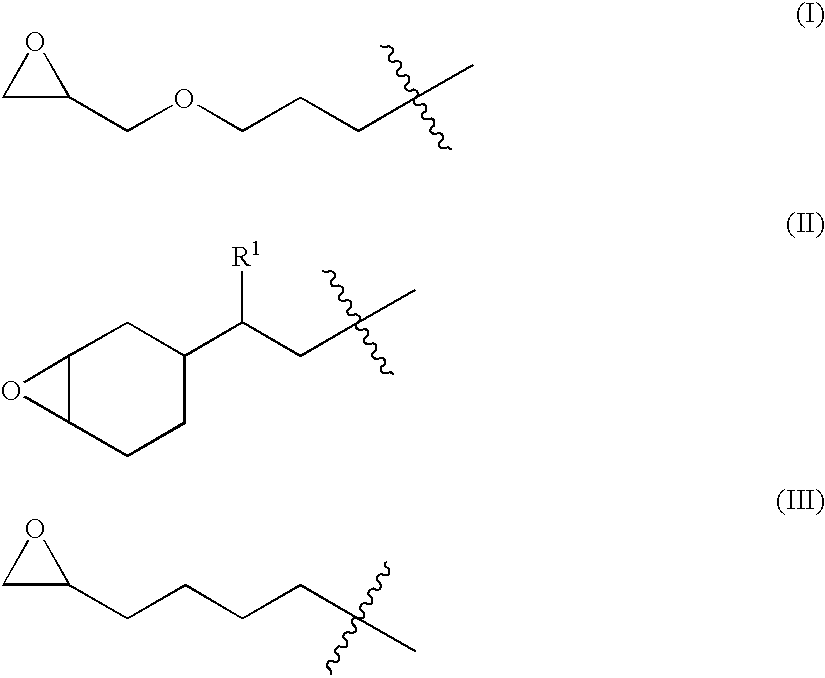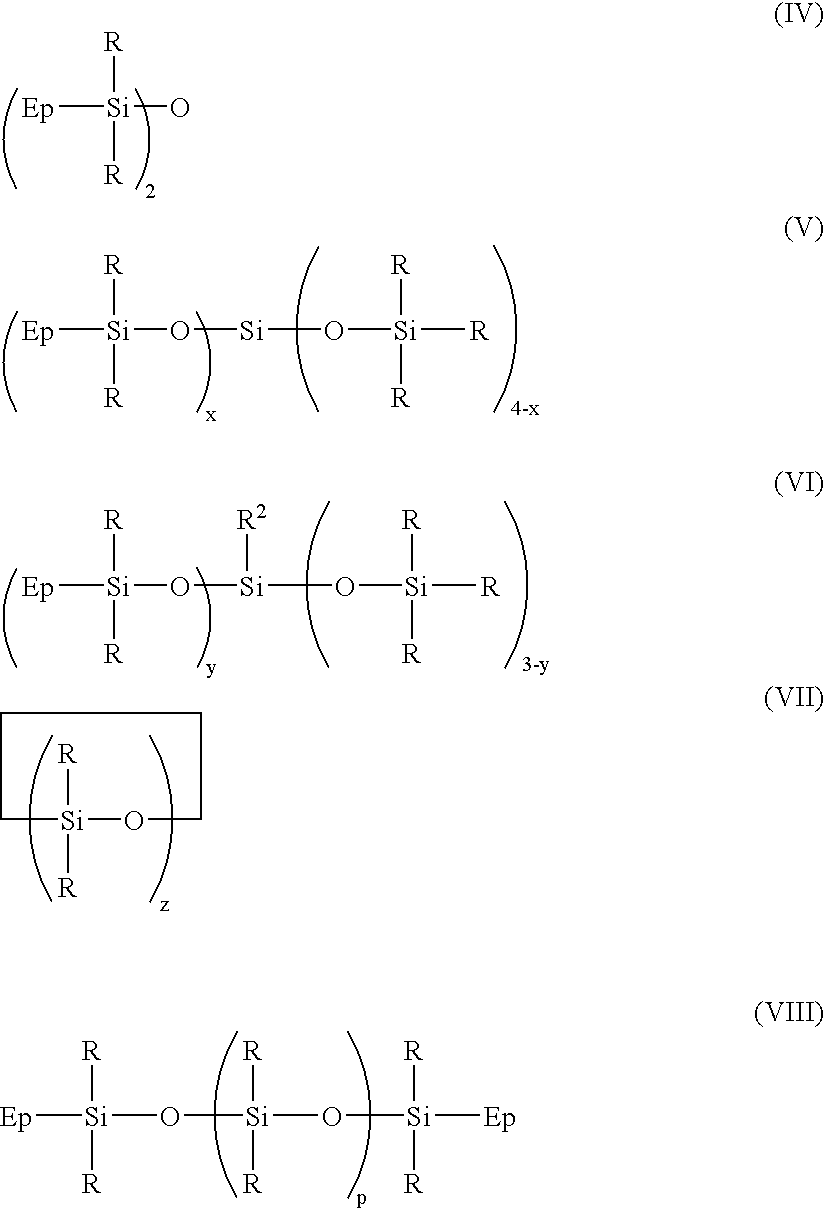Thermally curable compositions and method
- Summary
- Abstract
- Description
- Claims
- Application Information
AI Technical Summary
Problems solved by technology
Method used
Image
Examples
examples 10-14
[0048]Effect of a comonomer on the curing of epoxy systems: Epoxy resins were cured in the presence of a known amount of 2-ethylhexylvinyl ether, 1 wt. % OPPI and 0.5 wt. % Pd(acac)2 in a DSC pan by maintaining the sample pan isothermally at 82° C. Table 4 lists the epoxy resins used, concentrations of the vinyl ether, and the exotherm temperature during cure.
TABLE 4Amount ofEpoxyVinyl ether,Time, minutesΔH,Ex. #Resinwt %OnsetPeakCompletionJ / gEx. 10E210.51.011.4118.60336Ex. 11E2120.782.2115.38293Ex. 12PC-100051.132.5317.2299(T758 ®)3Ex. 13BADGE220.781.0315.50306Ex. 14BADGE20.50.881.0115.813361E2: Bis(3,4-epoxycyclohexylmethyl) adipate2BADGE: Bisphenol A Diglycidyl Ether3T758 ® is Tamanol 758 phenolic novolac resin from Arakawa Chemical company.
[0049]The data show that the presence of vinyl ether decreases the curing time as compared to when the curing was done in the absence of the vinyl ether.
examples 15-20
[0050]Effect of varying relative concentrations of catalyst and initiator during the cure of PC-1000 resin system: PC-1000 resin was cured with various amounts of OPPI initiator and Pd(acac)2 catalyst in a DSC pan by heating the sample from room temperature at a rate of 10° C. per minute. Table 5 lists the concentrations of initiator and catalyst, and their effect on the exotherm temperature during cure.
TABLE 5AmountofAmount ofcatalyst,Temperature, ° C.Ex. #initiator, wt %wt %OnsetPeakCompletionΔH, J / gEx. 150.50.287110125294Ex. 160.50.882101111313Ex. 171.00.587104114330Ex. 181.50.295109119280Ex. 191.50.883100109303Ex. 201.0*0.586101112347*Initiator used was iodonium-[4-(1-methylethyl)phenyl][4-methylphenyl]tetrakis-(pentafluorophenyl)]borate.
[0051]Table 5 shows the results of the experiments done for the curing of PC-1000 resin. Data shows that various amounts of initiator and catalysts gives rise to different onset, peak and completion temperatures of curing.
example 21
[0052]A rectangular cast form with dimensions of about 60 mm×6 mm×1.5 mm was filled with PC-1000 resin, 1.0 wt % OPPI and 0.5 wt % Pd(acac)2 and cured within a few minutes when placed in a 70° C. oven. DSC isothermal scans of the same resin mixture at 60° C., 70° C., 80° C., or 90° C. showed complete cure ranging from 52 minutes to 13 minutes, respectively. When Cu(acac)2 was substituted for Pd(acac)2 at 0.5 wt. % in the same resin mixture, the time to complete cure was about two times that of the Pd(acac)2 mixture curing time at all temperatures.
PUM
| Property | Measurement | Unit |
|---|---|---|
| Temperature | aaaaa | aaaaa |
| Temperature | aaaaa | aaaaa |
| Temperature | aaaaa | aaaaa |
Abstract
Description
Claims
Application Information
 Login to View More
Login to View More - R&D
- Intellectual Property
- Life Sciences
- Materials
- Tech Scout
- Unparalleled Data Quality
- Higher Quality Content
- 60% Fewer Hallucinations
Browse by: Latest US Patents, China's latest patents, Technical Efficacy Thesaurus, Application Domain, Technology Topic, Popular Technical Reports.
© 2025 PatSnap. All rights reserved.Legal|Privacy policy|Modern Slavery Act Transparency Statement|Sitemap|About US| Contact US: help@patsnap.com



